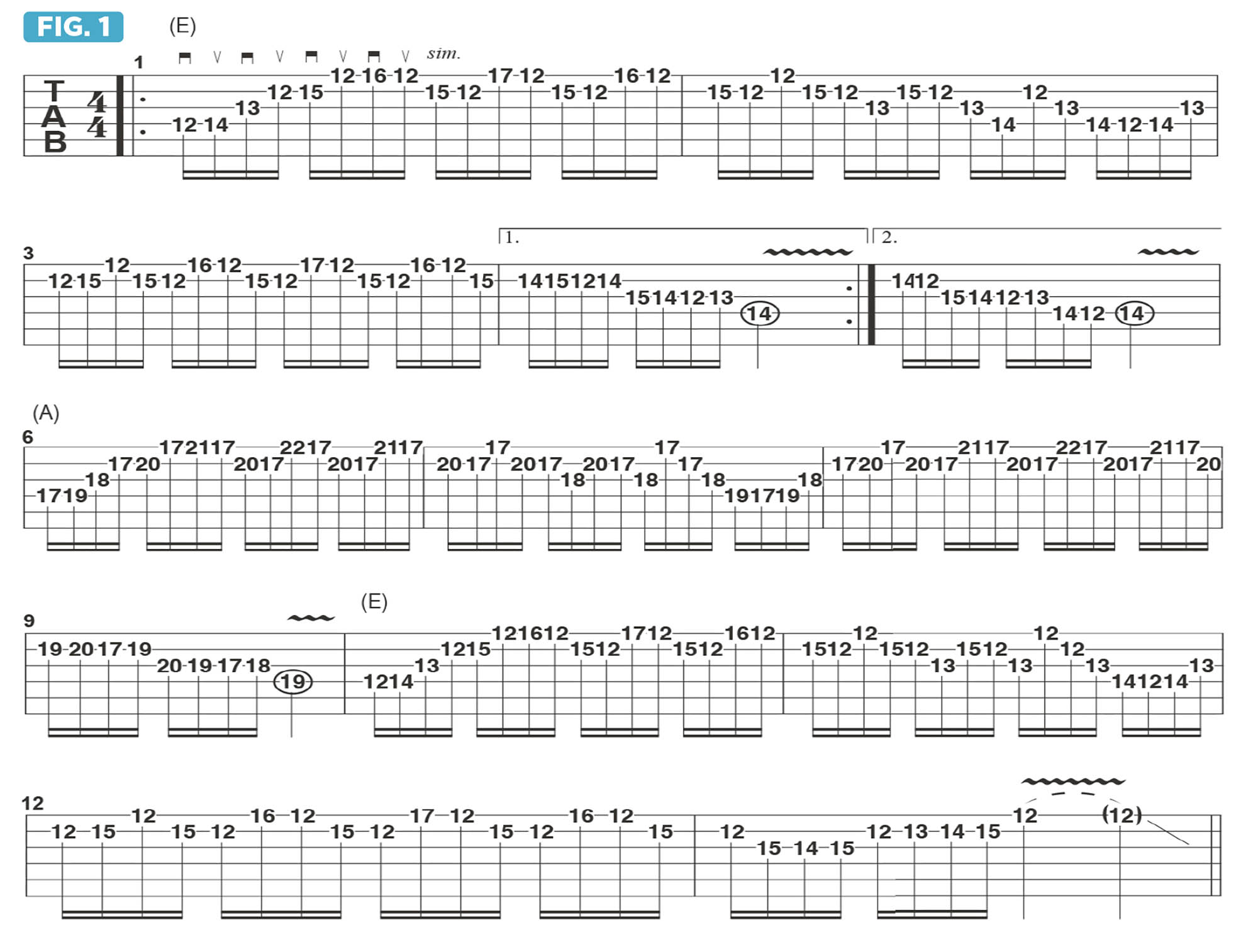
Steve Morse is one of my biggest influences, and you’ll find no better practitioner of using blazing bluegrass-style flatpicking in a rock or fusion setting.
In this lesson, we’ll continue exploring this topic and look at the verse section of my tune Free Range Chicken, which is built from dominant 7 arpeggios played in straight 16th notes and articulated with alternate (down-up-down-up) picking. Definitely an alternate-picking workout!
Figure 1 presents the 16-bar verse. The first eight bars are based on an E7 arpeggio (E, G#, B, D) with the inclusion of the 4th, A, as well as a few chromatic lower neighbors, used as passing tones.
In bar 4, I begin with C#, which is a half step below D, the b7 chord tone. On beat 2 I include the notes Bb, which is the b5, located a half step below the 5th, B, and G natural, which is the b3, located a half step below G#, the major 3rd.
In bar 9 (bar 6 of Figure 1) I move the pattern up a perfect 4th to A and proceed to embellish the notes of an A7 arpeggio (A, C#, E, G) in a nearly identical manner. Here I add the fourth, D, the 6th, F#, and the minor, or “flatted,” 3rd, C.
I begin Figure 1 with a downstroke and employ strict alternate picking, with the four 16th notes of each beat picked down-up-down-up. Doing this can get a little squirrely when crossing to a higher or lower string, depending on the direction of the pick strokes.
It’s always easier when the pick is already heading in the direction of the new string – picking a downstroke followed by an upstroke on a higher string, or an upstroke followed by a downstroke on a lower string.

This is known as “outside the strings picking,” or simply “outside picking.” “Inside picking” – picking an upstroke followed by a downstroke on a higher string, or a downstroke followed by an upstroke on a lower string – is more difficult to perform.
A great place to start is with just the notes on an E7 arpeggio, as shown in Figure 2. When playing straight up and down the arpeggio like this, there are six ascending notes and six descending notes, so we end up with three beats per bar.
Figure 3, bar 1, illustrates the addition of the 4th, A. Bar 2 is a John Petrucci-style phrase based on this same idea, with the low D# note serving as the lower neighbor of E.

Alternate picking is great for when you move across the strings sequentially, as in Figure 4, with three notes played per string and picked down-up-down followed by up-down-up.
Keep an eye on the sequence in bar 2 of Figure 1, from the upbeat of beat 2 through beat 4, shown in Figure 5, as it can be a bit of a pick-hand “tangler.”

Figure 6 expands this figure across two bars. Practice it slowly at first, keeping your picking movements small, efficient and relaxed, then gradually increase the tempo.

All of these picking techniques can be used in almost any style. I like to combine them in devising my own musical “gumbo”.







